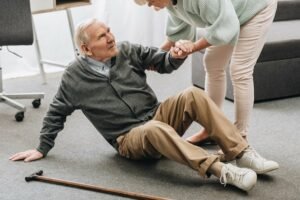Here are the hearing facts: One billion people worldwide are at risk of hearing loss from loud music and other noise. That estimate comes from a 2015 World Health Organization study. According to the US Department of Labor, Occupational Safety & Health Administration (OSHA), twenty-two million workers are exposed to potentially damaging noise at work each year. Last year, U.S. business paid more than $1.5 million in penalties for not protecting workers from noise. It is well established that damage to hearing is a huge problem with costly consequences, but it is also well established that most of this damage is preventable.
How loud is too loud?
There are many occupations, environments and activities that put us at a heightened risk of hearing damage from noise. When the noise exposure equals or exceeds 85 decibels, hearing protection should be used. Long-term exposure to 80-85 decibels or higher can cause permanent, irreversible hearing loss.
Here are some noise makers and the time frame before damage may occur:1
Here are the hearing facts: One billion people worldwide are at risk of hearing loss from loud music and other noise. That estimate comes from a 2015 World Health Organization study. According to the US Department of Labor, Occupational Safety & Health Administration (OSHA), twenty-two million workers are exposed to potentially damaging noise at work each year. Last year, U.S. business paid more than $1.5 million in penalties for not protecting workers from noise. It is well established that damage to hearing is a huge problem with costly consequences, but it is also well established that most of this damage is preventable.
How loud is too loud?
There are many occupations, environments and activities that put us at a heightened risk of hearing damage from noise. When the noise exposure equals or exceeds 85 decibels, hearing protection should be used. Long-term exposure to 80-85 decibels or higher can cause permanent, irreversible hearing loss.
Here are some noise makers and the time frame before damage may occur:1
SoundsIntensitiesPermissible exposure time
| Heavy traffic | 85 dB | 8 hours |
| Bulldozer | 88 dB | 4 hours |
| Jazz Concert | 91 dB | 2 hours |
| Power Mower | 94 dB | 1 hours |
| Nightclub | 97 dB | 30 minutes |
| Rock Concert, Leaf Blower | 115 dB | 30 seconds |
| Car wash at 20 ft | 89dB | 3 hours |
| Diesel truck 40 mph at 50 ft | 84dB | 8hours |
| Food blender | 88dB | 4hours |
| Subway | 90-95 | 2 hours |
| Motorcycle | 96-100 dB | 15minutes |
| Chainsaw | 106-115 dB | :30 |
| Stock car races | 130 dB | :05 |
| Gun shot | 140 dB | Immediate |
Most of us do not carry a decibel meter on us to measure the loudness of sounds we are exposed to throughout our day. However, you can pay attention to certain warning signs that a sound might be damaging to your hearing. If you experience these symptoms, the sound is likely well over 85 decibels and potentially damaging.
- You have difficulty talking or hearing others talk over the sound
- The sound makes your ears hurt
- Your ears are ringing after hearing the sound
- Other sounds seem muffled after you leave an area where there is loud sound
Am I at risk?
Most of us have been exposed to loud noise for a period at some point in our life, whether it was the time you went target shooting or attended the U2 concert. However, if are consistently exposed to loud sound through your occupation, environment or hobby, plan to protect your hearing.
Some groups that should consider hearing protection include:
- Hunters
- Military personnel
- Diesel truck mechanics and drivers
- Motorcyclists and snowmobile riders
- Musicians
- Live music fans
- Certain factory workers
- Flight personnel
- Farmers
- Physical education teachers
- Construction worker
Hearing protectors come in two forms: earplugs and earmuffs.



Custom molded, silicone ear plugs Flanged ear plugs Basic foam ear plugs
Earplugs are small and fit into the outer ear canal. To work most effectively, they must be sealed snugly so the entire circumference of the ear canal is blocked. Plugs are available in a variety of shapes and sizes and custom-fit options are available. For people who have trouble keeping them in their ears, wearing a head band can help keep them in place.

Earmuffs have padded cuffs that seal around the ear
Earmuffs fit over the entire outer ear to form an air seal. The entire circumference of the ear canal is blocked, deadening sound. They are held in place by an adjustable band. Earmuffs will not seal around eyeglasses or long hair, and the adjustable headband tension must be sufficient to hold earmuffs firmly in place. This is particularly good option for young kids in loud places.
Earplugs and earmuffs can be found at most drug stores, construction supply stores and online.
While this advice can help you be vigilant in the future — and perhaps help you guide younger members of your family — if you have already sustained hearing damage, help is available. Start with a professional evaluation. Contact Sierra Nevada Hearing Aid Center and meet with Dr. Heather Dean to diagnose your hearing and explore your options at 775.882.3277.
1 Noise levels pulled from various sources: WebMD, https://goo.gl/D91PK1
Dangerous Decibels, https://goo.gl/41GtGs
Hearing Aid Know, https://goo.gl/2JBJ3J
The American Academy of Otolaryngology–Head and Neck Surgery, https://goo.gl/VdPwh9




